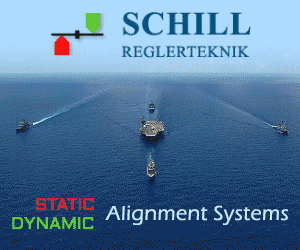Additive Manufacturing in Defence: Enhancing Resilience

In the ever-evolving landscape of modern warfare, the need for innovative and efficient technologies has become paramount. One such groundbreaking technology that has captured the attention of the defence industry is Additive Manufacturing (AM). Commonly known as 3D printing, AM has transformed the traditional landscape of manufacturing in a multitude of industries. However, its utilization within the defence sector, particularly in the realms of rapid prototyping and supply chain resilience, has brought about a new era of possibilities and capabilities.
Understanding Additive Manufacturing in Defence
In the realm of defence, Additive Manufacturing, often referred to as 3D printing, is a groundbreaking technique for crafting three-dimensional objects from digital designs. Its significance lies in its capacity to fabricate intricate parts with remarkable precision, far more efficiently than conventional manufacturing methods. This advancement has enabled defence agencies to expedite the creation of prototypes, spare components, and critical machinery parts, significantly streamlining the development and upkeep processes.
Rapid Prototyping: Accelerating Innovation and Adaptability
Accelerating the pace of innovation and fostering adaptability, rapid prototyping stands as a key advantage of Additive Manufacturing in the defence domain. Previously, crafting prototypes for defence equipment was a slow and costly procedure, frequently leading to setbacks in the advancement of critical technologies. Yet, with the integration of AM, defence entities can rapidly construct and evaluate prototypes, enabling a more iterative and flexible approach to design.
This ability to rapidly prototype has not only accelerated the innovation cycle but has also allowed for more thorough testing of concepts and designs. Through the utilization of AM, defence engineers can quickly identify flaws and make necessary adjustments, ultimately leading to the development of more efficient and effective defence equipment.
Supply Chain Resilience: Mitigating Dependency and Enhancing Operational Efficiency
The traditional defence supply chain has long been characterized by its complexities and vulnerabilities. Dependencies on specific suppliers, geographic constraints, and logistical challenges have often posed significant risks to the timely delivery of critical components and equipment. However, with the integration of Additive Manufacturing into the supply chain, the defence sector has witnessed a remarkable shift toward enhanced resilience.
AM enables defence establishments to manufacture components and spare parts on-site or near the point of need, drastically reducing the reliance on external suppliers and mitigating the risks associated with supply chain disruptions. This localized production capability not only ensures a more robust and agile supply chain but also facilitates a more cost-effective approach to maintenance and repair operations.
Overcoming Challenges and Ensuring Regulatory Compliance
Despite its numerous advantages, the integration of Additive Manufacturing in the defence sector has not been without challenges. Ensuring the compliance of 3D-printed components with stringent defence standards and regulations remains a crucial area of focus. Robust quality control measures and comprehensive testing protocols have become imperative to guarantee the reliability and safety of AM-produced defence equipment.
Furthermore, the demand for adept professionals well-versed in AM technologies and intricate design nuances has emerged as an essential prerequisite for the effective integration of this transformative technology. Consequently, substantial investments in training and education have become indispensable in cultivating a workforce capable of fully leveraging the potential of Additive Manufacturing within the defence sector.
The Future Landscape: Paving the Way for Enhanced Capabilities
As Additive Manufacturing continues to evolve, the future landscape of the defence sector is poised to witness a multitude of transformative advancements. The integration of advanced materials, such as high-performance alloys and composites, promises to enhance the strength and durability of defence equipment, thereby bolstering operational capabilities.
Furthermore, the convergence of Additive Manufacturing with other cutting-edge technologies, including artificial intelligence and robotics, holds the potential to revolutionize the production processes and operational functionalities within the defence industry. This convergence is expected to pave the way for the development of autonomous manufacturing systems, further amplifying the agility and efficiency of defence establishments.
Emerging Global Implications: Collaborative Innovation and Strategic Alliances
The global impact of Additive Manufacturing in the defence sector extends beyond individual nations, fostering a collaborative environment for innovation and strategic alliances.
International partnerships and joint research endeavours centred around AM have facilitated the exchange of knowledge and resources, leading to the collective advancement of defence technologies on a global scale. The establishment of collaborative platforms and information-sharing networks has not only accelerated the pace of technological advancements but has also fostered a sense of collective security and interoperability among nations.
Furthermore, the shared exploration of AM's potential applications in defence has paved the way for the standardization of protocols and regulations, ensuring uniformity in quality assurance and compliance across borders. This harmonization of standards has fostered a cohesive global defence framework, enhancing the interoperability and compatibility of defence systems and equipment among allied nations.
Ethical Considerations and Security Implications
While the proliferation of Additive Manufacturing in the defence sector offers a multitude of benefits, it also raises critical ethical considerations and security implications. The democratization of 3D printing technologies has led to concerns regarding the potential misuse of AM for the production of unauthorized or illicit weaponry. The need for robust regulatory frameworks and stringent control mechanisms has become imperative to prevent the unauthorized proliferation of defence-related AM technologies and ensure global security.
Moreover, the safeguarding of intellectual property and sensitive defence designs has emerged as a paramount concern. Strengthening cybersecurity measures and implementing comprehensive data protection protocols have become essential in safeguarding classified information and preventing unauthorized access to critical defence-related AM data.
The Call for Continued Innovation and Adaptability
In an ever-evolving geopolitical landscape, the integration of Additive Manufacturing in the defence sector necessitates a continuous commitment to innovation and adaptability. Research and development initiatives focused on the exploration of novel materials, advanced printing techniques, and scalable production processes remain crucial in unlocking the full potential of AM within the defence industry. Furthermore, fostering a culture of adaptability and flexibility within defence establishments is essential to embrace the transformative capabilities of AM and leverage them to enhance national security and defence capabilities.
By embracing a forward-looking approach and fostering a collaborative ecosystem, defence entities can harness the true power of Additive Manufacturing, thereby fortifying their strategic position and resilience in the face of emerging security challenges and technological disruptions.
Conclusion
In summary, Additive Manufacturing has opened new avenues for the defence sector, reshaping the concepts of rapid prototyping and supply chain resilience. Its ability to expedite innovation, alleviate supply chain dependencies, and encourage localized production has solidified AM as a vital facilitator of operational efficiency and adaptability within the defence domain. As the technology progresses and evolves, its seamless integration and strategic application are poised to be instrumental in shaping the future of global defence capabilities.










